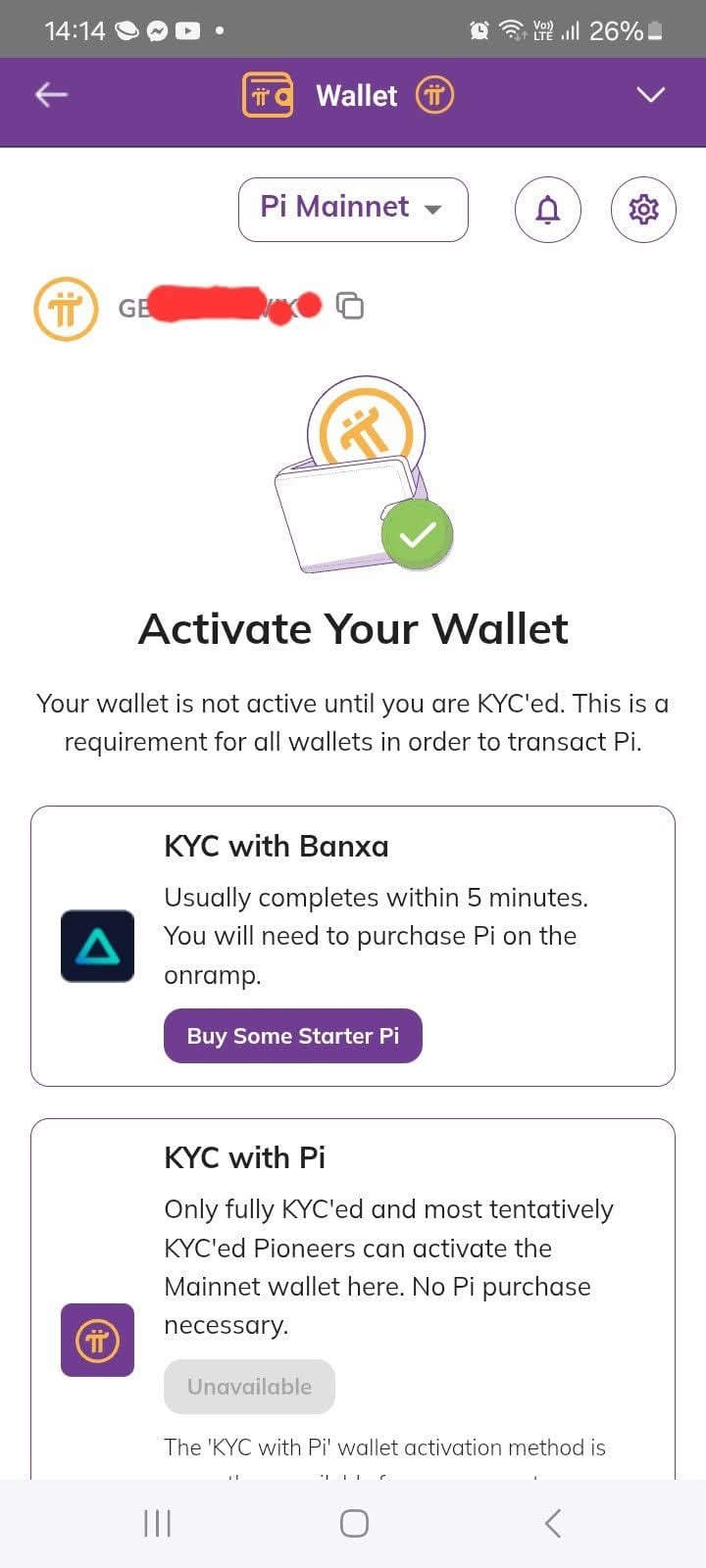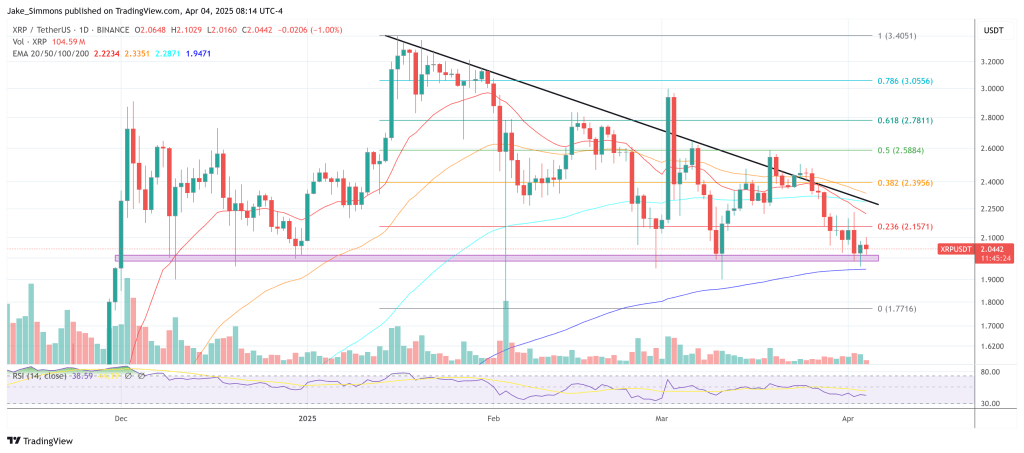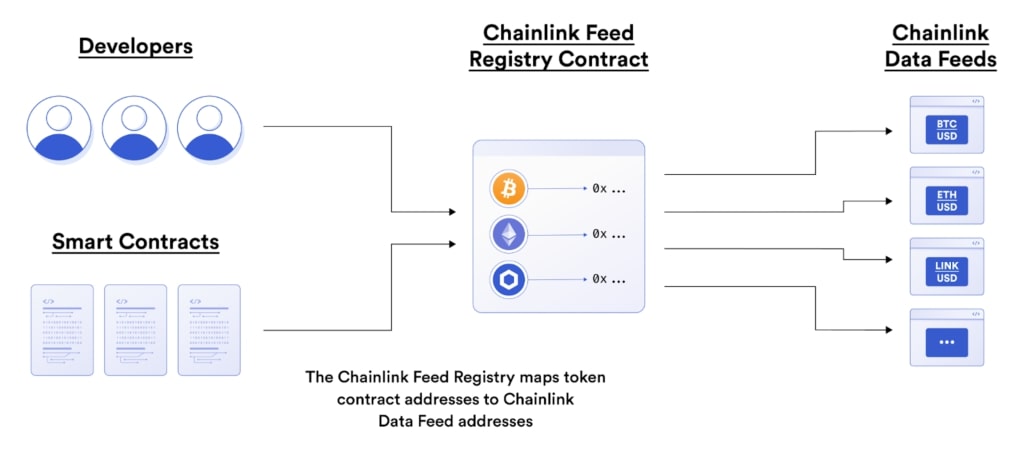The cryptocurrency market has made a rapid comeback following a series of violent price crashes in May and June 2021. In fact, a number of benchmark crypto have reached even higher valuations as of recently, compared to their May highs.
This was largely helped by the ongoing strong interest in the ecosystem, where new product releases are still coming in droves and new users and investors keep joining the space everyday.
Larger, long-term cryptocurrency holders took substantial profits from the market back in May and June, befitting the typical “sell in May and go away” tradition in financial markets. During these sell-offs, the total capitalization of the crypto market fell by a whopping 50%, from $2.5 trillion in May down to $1.25 trillion by the end of June.
The big money has gone back to accumulation phase since the summer lows, which resulted in a new all-time high market capitalization of $3 trillion as of November 10, 2021.
All eyes are now on the developments in the crypto ecosystem, in an effort to understand whether the market still has juice for further growth.
In this article, we will discuss the current state of Bitcoin and Ethereum, the two major market movers, from the angles of their on-chain activity and technical analysis, which have historically acted as precursors for future price action.
We will additionally discuss news and developments in individual cryptocurrency product categories like layer-1 blockchains, DeFi protocols, and blockchain games in order to find out what has been trending out there.
BITCOIN ANALYSIS
On-Chain Activity:
Historically, Bitcoin’s activity on the blockchain has acted as a precursor to Bitcoin price action. In that sense, monitoring the on-chain activity of Bitcoin can be useful to identify whether:
- long-term Bitcoin holders are accumulating or selling their coins,
- new investors are joining the market to absorb the selling volumes of long-term holders.
Accumulation by long-term holders shrinks the Bitcoin liquidity in the market, which creates a shortage in supply and can push prices up. Such behaviour of long-term holders has generally caused the Bitcoin price to soar up to new all-time highs.
After every time that Bitcoin reached a new all-time high, its network has started to loosen up, where the long-term Bitcoin holders started selling a portion of their holdings. Under such circumstances, prices can keep climbing up though, as long as new buyers join the crypto market and buy the older coins of these long-term holders.
The market top is reached when the selling pressure created by long-term holders outweighs the buying pressure of new investors. Historically speaking again, Bitcoin is known to become quite volatile after reaching a new all-time high.
Below are a number of Bitcoin on-chain metrics that can serve as a gauge to understand the state of the Bitcoin market and its possible future price action:
1. HODL Waves
“HODL” waves are used in the cryptocurrency world to monitor the aging of coins as they are held and spent (sold).
In the below chart, you will see a number of horizontal color bands, each of which shows the percentage of Bitcoin supply that was moved from a wallet within the specified time period. For example, bitcoins that were last moved five months ago fall into the 3m-6m band located at the very bottom of the chart.
The chart tracks the movement of “older” coins. By older, we mean bitcoins that have not moved out of a wallet for over three months. The market generally considers the old coins to be held by the “smart money,” meaning they grow younger (sell) as price makes new all-time highs and grow older as price either drops or horizontally ranges (accumulate).
Bitcoin started a new uptrend in October 2020 from $10,000 per coin and reached a new all-time high of around $65,000 per coin by April 2021. As you can observe in the below chart, the percentage of coins older than 1 year have continued to drop until April 2021 (as they were distributed/sold into price discovery), which also marked the top price for Bitcoin. The red arrow in the chart points at the low level in April 2021 for the older coin ratio among the entire Bitcoin supply.
Since April 2021, the percentage of “HODL” coins older than three months has rallied to an all-time high of 85.25% of Bitcoin’s total circulating supply. This means an increasing number of BTC were going unspent for more than three months. This has in return reduced liquidity in the market, which has pushed the price back up over the all-time highs observed in April.

Since reaching the all-time high, the amount of old coins on the network has begun to flatten out. This also means the number of young coins has bottomed and is beginning to rise, which has historically meant the absorption of long-term-holder selling power by the buying power of new investors. This in return allows the Bitcoin price to keep climbing higher.
The below chart tracks the aging trends of bitcoins that are younger than three months. Older coins grew increasingly young starting from August 2020 all the way until price discovery (green arrow) in March 2021. This was followed by a decline (red arrow) after the Bitcoin price had topped out in April.
We started to see an uptick in the number of young coins starting in late October 2021, which signals the entrance of new market participants. This could potentially suggest a new uptrend for Bitcoin if this uptick in young coins turns into a larger growth trend. In that scenario, the price of Bitcoin could keep climbing as long as the buying power of these young coins outweighs the selling pressure by old coins of long-term holders.

2. Adjusted Spent Output Profit Ratio (aSOPR)
Long-term holders stayed strong through the recent volatility of Bitcoin. aSOPR is calculated by dividing the selling prices of coins that are held longer than an hour by their buying prices. Any value at or above 1 indicates that profits are being taken (healthy) and any value below 1 indicates that losses are being realized which can mean capitulation (unhealthy/trend reversal).
Historically, significant price crashes usually followed whenever the aSOPR ratio fell below 1. However, during the very last correction of Bitcoin from its new all-time high price of $69,000, this ratio remained largely above 1 despite an outsized drawdown in Bitcoin’s price, meaning profits are being taken and the market is absorbing any selling activity.

3. Net Exchange Flows
The net exchange position tracks the change in the supply of bitcoins in cryptocurrency exchange wallets. This constitutes a key metric in assessing the general liquidity of Bitcoin as coins are predominantly traded in crypto exchanges.
Bitcoins that enter exchanges (green bars in the below chart) indicate the distribution of coin supply which could bring along a strong selling pressure to the market.
On the other hand, coins that leave exchanges (red bars in the below chart) indicate the accumulation of Bitcoin by holders.
BTC have steadily been leaving exchanges since late June 2021, which also marked the date of Bitcoin’s bottoming out at $29,000 per coin during its summer correction.
The balance of Bitcoin supply in exchange wallets has dropped by as many as 250,000 bitcoins since reaching a historical high balance of +150,000 coins in June 2021. This has in return dampened liquidity and assisted in pushing prices up to new all-time highs.
Coins leaving exchanges accompanied with the rising of long-term hodl waves can suggest a continuation in the number of younger coins as Bitcoin tries to retest its all-time high.
On the other hand, a higher net exchange position would mean the ratio of coins entering exchanges (where they are sold and bought by new holders) is catching up with coins leaving the exchanges. This would be confirmed by the flattening of hodl waves of old coins against the rising number of young coins on the network.

- Network Health – Hash Rate
Hash rate is a measure of the Bitcoin network’s cumulative strength and can be viewed as the horsepower that propels the network and its security.
Hash increases either when Bitcoin miners join the network or increase their mining capacity, and it decreases when miners quit mining (capitulate) or sell their equipment. China was the epicenter of Bitcoin mining until the recent regulations in May 2021, which mandated miners to operate outside the borders of the country. The process of Chinese miners packing up shop and scattering around the world has been coined as “the Great Hash Migration,” which has been effectively taking place since May.
As of June 27, 2021 hash reached its local bottom at 61m Th/s after falling around 70% from its climax figure back in April.
But miners were able to quickly locate new homes all over the world; as a result, hash has swiftly climbed back by nearly three times since bottoming out, which currently sits at around 171m Th/s (within 15% of its all-time high hash rate).
The below chart highlights the uptrend in hash rate following the capitulation event on June 27. A large portion of this new uptrend in the hash has been fueled by the United States, particularly the state of Texas, which has become a source of capital for new miners entering the country, along with existing ones, with the help of their exceptionally crypto-friendly regulations.

Bitcoin Technical Analysis:
1. SMA 400 on the 4-hour
Bitcoin reached a new all-time high price of $69,000 on November 10.
The BTC price has been on a decline since then, but it managed to bounce off twice from exactly the SMA 400 moving average line on the 4-hour chart (the red/burgundy line in the below chart) at $55,700, forming a potential double bottom at least in the shorter term:

The SMA 400 line on the 4-hour Bitcoin price chart has been important because whenever Bitcoin managed to decisively break above it (like in early October in the above chart), it usually resulted in strong rallies to the upside. The same moving average line is acting as support right now. If the Bitcoin bull market is to continue, its price should stay above the SMA 400 on the 4-hour chart.
2. Rising Channel Support
Still, the Bitcoin price may temporarily stay under the 4-hour SMA 400 even in the midst of bull markets. So in case the SMA 400 support on the 4-hour Bitcoin price chart fails, the following lower support comes from the rising channel that started at the July low price of $30,000, which is at around $50,000 as of November 24:

3. Positive Divergence on the 4-hour
One critical thing to note is the positive RSI and MACD divergence that occurred during the 4-hour price action. A positive divergence occurs when a price decrease is not accompanied by a decrease in technical indicators, which can act as the harbinger to a trend reversal:

4. Net Value to Transaction Volume (NVT) on the weekly
We are yet to see if the crypto bull market is over or will continue, but to evaluate that better, we need to look at the longer-term charts and indicators of Bitcoin.
One indicator that has worked exceptionally well for Bitcoin on the weekly timeframe is the Network Value to Transaction Volume ratio (the NVT). The NVT is defined as the ratio of total market capitalization divided by transacted volume in the specified window. The NVT is often regarded as the price-to-earnings (PE) ratio of cryptocurrencies.
In the weekly Bitcoin chart below, the NVT value climbs up with the rising Bitcoin price and the color of the NVT indicator line remains red as long as the Bitcoin network is not considered to be too expensive given the current volume of transactions.

Drops in the value of the NVT indicator line may eventually cause the color of the line to turn black, which suggests that the market thinks Bitcoin is overvalued.
Every time in Bitcoin’s history, whenever the NVT indicator line turned to black on the weekly chart, it was followed by at least a 40% drop in Bitcoin price. The last time that the NVT turned black was the week of May 10, 2021, which was followed by Bitcoin crashing from $58,000 to $30,000 in a matter of two weeks.
In that sense, the Bitcoin uptrend may be intact as long as the NVT indicator line remains red.
5. The Elliott Wave Count
The long-term Elliott wave count suggests that we may currently be traveling through the 5th wave, which constitutes the final impulse wave in a full growth cycle. In the below chart (3-day chart), if we start counting the Elliott waves from its previous bear market low of $3,000 in December 2018, we would likely be on the 5th, final impulse wave as of now:

According to the Elliott wave theory, the 5th wave can be a truncated wave, which means that the $69,000 all-time high price reached on November 10 could be the top of a truncated 5th wave and thus the climax of a full Elliott growth cycle. However, some other long-term indicators may suggest otherwise.
6. More Long-Term Indicators
Bitcoin’s stochastic RSI has almost zeroed out on the 3-day chart (the stochastic RSI can range between the values of 0 and 100), which is a significantly large timeframe. Larger time frames always overrule shorter time frames in terms of the dominating trend. Bitcoin’s stochastic RSI zeroing out on the 3-day chart suggests that a trend reversal is likely, at least for the shorter term:

Finally, in terms of the monthly Bitcoin chart, the RSI indicator is trying to break out of the 70 resistance zone (in purple in the below chart). If the RSI breaks above 70, this would take BTC to the overbought zone on the white area and could bring the next leg upwards in price action (100 is the maximum possible overbought value).
The stochastic RSI on the other hand closed above the oversold threshold of 20 (in purple in the below chart) in September 2021 and it remains above that level since then, which is a healthy indicator for the long-term uptrend to continue. The MACD line also made a new all-time high on the monthly chart, which could also suggest further upward price action.
ETHEREUM ANALYSIS
On-Chain Activity:
Ethereum holders are showing signs of further accumulation as the number of prospective ETH 2.0 validators keep growing and coins are leaving exchanges at an accelerated rate.
1. Number of Addresses with Balance ≥32 ETH
This metric tracks the number of Ethereum wallet addresses that hold more than 32 Ethers (ETH). Holding 32 ETH in a single address is required to become a validator on ETH 2.0, which is the staking consensus protocol that Ethereum is currently migrating to. In that sense, the rising number of Ethereum wallets with more than 32 ETH suggests that more people invest in ETH to become validators, which is bullish for the Ethereum network.
Although the number of addresses with more than 32 ETH crashed by 17% in June 2021, it started to climb back steadily since then. The reversal of trend in this metric was followed with the Ethereum price gaining over 130% since June. This represents a healthy sign that (1) holders are working to become validators as ETH 2.0 goes live and (2) larger holders of Ethereum are continuing to stack their wallets with more coins regardless of the substantial price appreciation.

2. Coins Locked in Smart Contracts
This metric tracks the portion of Ethereum coin supply that is being locked and utilized in smart contracts; it offers insight about the magnitude of ETH that is used in DeFi applications, along with ETH 2.0 validator contracts.
The amount of Ethereum locked in smart contracts decreased slightly during November after reaching an all-time high of 28.1% on October 28. The overall trend, however, is still intact and has tailwinds working in its favor, including a steady trend in gas fees and an increase in ETH supply burned as a result of the new EIP-1559 protocol.
A higher number of ETH being locked and used in smart contracts translates to growing supply illiquidity which has been observable since August 2020. Lower liquid ETH supply has in return pushed Ethereum prices up by about 10-fold since then.

3. Exchange Balance
Throughout 2021, there was a 24% drop in the Ethereum balance of cryptocurrency exchanges. Coins moving into Ethereum wallets and smart contracts from exchanges have created this drop.
The long-term trend in the decline of ETHs in exchanges is progressing steadily and is down over 36% since August 2020. This indicates that holders have been purchasing coins to hold and use them in different Ethereum dapps.

4. Transaction Gas Prices
Gas is the fee that users must pay to make transactions on the Ethereum network. It is akin to the commissions you pay in traditional banking services.
If gas fees decline on the Ethereum blockchain, then this means there is less activity on the network. Similarly, if there are higher gas fees, then there is more traffic in the network.
Gas fees and the price of Ethereum have generally moved in tandem with each other because gas fees are paid in Ethereum. When there are more transactions in the network, there is naturally more demand for Ether, which drives up the price of the coin.
In the below chart, the sudden gas fee spikes that happened in February and May, for example, coincide with the Ethereum price hikes, which spiked to $2,000 on February 20 and to $4,500 on May 12.

5. Ethereum Supply
Previously, gas fees accumulated in the network used to be paid to Ethereum miners as a return for their validating transactions. With the EIP-1559 upgrade, gas fees are now burned and removed from the circulating Ethereum supply. Under this new condition, an increasing amount of ETH is removed from the supply with the network being used more and more, which has led to the burning of more than 1 million ETH over the last three months.
The chart below indicates the trend in circulating supply both before and after the implementation of EIP-1559 on August 5, 2021. Before the upgrade went live, 13,558 new Ethers were coming into circulation every day. After the launch of the EIP-1550 upgrade, this figure decreased by 65% to only 4,701 new units being added into circulation per day. Although it has only been around three months since this update went live, there has been a noticeable impact on the network that has benefited its health.

6. Top 5 DeFi Protocol Flows on Ethereum
Monitoring the total ETH locked in the top DeFi protocols on the Ethereum blockchain offers insight into the strength of the Ethereum ecosystem. After experiencing a sudden 20% drop in the number of ETH locked from October 27 to October 31, the number of ETH flowing into the top 5 DeFi protocols has grown by 5%.
The amount of ETH locked in the top 5 protocols has stayed flat despite Ethereum’s USD price dropping by around 16% from its highs made on November 10. This is a positive sign that the ecosystem’s fundamentals are still intact despite volatile USD-price values.

Ethereum Technical Analysis:
Ethereum’s price action has usually been very strongly correlated to that of Bitcoin. Throughout the history of the cryptocurrency market, Bitcoin managed to drag Ethereum and other cryptocurrencies along with itself. The major reason for this parallel price action was that funds entering and exiting the crypto market initially flowed into Bitcoin, which then moved in and out of other cryptos starting with Ethereum. In that sense, Bitcoin should not be following a sustained downtrend for the Ethereum price action to climb upwards.
1. SMA 400 on the 4-hour
In line with Ethereum’s correlation with Bitcoin, the SMA 400 moving average line on the 4-hour Ethereum price chart has also played as a critical support/resistance level. Following the Ethereum all-time high of $4,900 and Bitcoin all-time high of $69,000 on November 10, Ethereum has been consolidating above its SMA 400 moving average on the 4-hour price chart (the red/burgundy line in the below chart) having made a double bottom at around $4,000 since then.

2. Price Action on the Daily View
Looking at the daily price chart of Ethereum, we see that the latest rally, which started at the beginning of October and ended at a new all-time high price of $4,900 on November 10, has been a pretty steady and linear climb (the orange-circled rally in the below chart). It does not resemble a FOMO-driven, parabolic rally with a blow-off top. This may suggest a fake-top for the price of ETH, to be followed by a more accelerated, parabolic rally in the coming months that would bring a new all-time high price.

3. The State of Daily Moving Averages
Following the low price of $1,700 on July 20, Ethereum started a new uptrend and managed to bounce upwards from its daily SMA 200 (the green line in the below chart) first and then from its daily SMA 100 line (the blue line in the below chart) at $2,750 per Ether. It is currently bouncing off from its SMA 50 moving average line (the red line in the below chart) after the start of the current correction period on November 10.
Thus, since the July lows, Ethereum has managed to bounce off every time from a shorter moving average, which indicates strong health for the current uptrend. If Ethereum can stay above its SMA 50 in the coming days, a new leg upwards may be around the corner depending on how Bitcoin behaves.
To add further confluence into the picture, the most recent rally from October created a rising channel (marked in purple in the below chart) and Ethereum managed to bounce from the bottom of this rising channel both on November 19 and November 23, which almost identically coincides with the daily SMA 50 line.

4. Monthly View
On the monthly chart, the RSI indicator is ranging in the overbought zone at around 80 (out of the maximum possible value of 100), which shows that the long-term buying power is still intact in order for the price action to continue higher.

CRYPTO INDUSTRY UPDATES
Regulatory Developments:
1. Legalization of Cryptocurrency Entities in the United States
On November 17, Republican House Representative Patric McHenry from North Carolina introduced a bill to amend the Internal Revenue Code of 1986 to clarify the definition of broker. Current language suggests a broker encompasses any individuals or firms that act as an intermediary between an investor and a securities exchange.
The proposed bill is aimed at grouping cryptocurrency exchanges and other crypto-related entities (i.e. node operators and miners) into this definition. This means they would have new responsibilities and have to follow procedures that are counterproductive to their current operation, despite not fully fit the definition of a broker. Applying the current definition of a broker to cryptocurrency exchanges, miners, and node operators have the potential to stifle the industry’s growth in the U.S. if left unchanged.
The bill introduced to the House of Representatives by Representative McHenry has received bipartisan support, meaning representatives from both major political parties (Democrats and Republicans) have motioned in favor of the bill. In less than 24 hours, the bill has gained the support of 10 co-sponsors that including six Republicans and four Democrats. The application of the current brokerage law to cryptocurrency exchanges was a hotly debated topic throughout the passage of the widely known Infrastructure Bill. Though it’s still early, seeing bipartisan support of an amendment to the language around the definition of a broker is a negative sign regarding the cryptocurrency space in the United States.
2. Future Bitcoin ETFs
The U.S. Securities and Exchange Commission (SEC) rejected VanEck’s filing for a spot Bitcoin ETF on November 12; however, the group had a futures ETF launch on November 16. Despite this rejection by the SEC, there is still a long list of filings for spot ETFs that are pending approval into July 2022. Grayscale is one of the more prominent parties waiting in line.
Last month the largest Bitcoin Trust in the world, GBTC, filed with the SEC to convert the entire trust into a spot ETF. The trust initially launched in 2013 and has evolved into the largest BTC investment vehicle in the world. The trust’s assets under management have recently eclipsed the $40 billion mark, which corresponds to approximately 3.5% of BTC’s circulating supply. The below timeline shows the decision dates for each of the pending spot Bitcoin ETF applications.

3. El Salvador Bitcoin City
The president of El Salvador, Nayib Bukele, announced the establishment of the world’s first Bitcoin City on November 20. The city, which is planned to be in the eastern region of La Union, will feature a VAT tax only and exclude all capital gains taxes on BTC, income taxes, property taxes, and payroll taxes.
Additionally, the city will leverage clean, natural geothermal energy from nearby volcanoes to power Bitcoin mining. The most critical component of Bukele’s plan is to issue $1 billion of “Volcano Bonds,” which will be split 50/50 to fund the volcano mining operations and to add additional BTC to the country’s reserve.
The bond will bear a 6.5% coupon and will be issued through the Liquid Network, which is a Bitcoin sidechain, and will entitle bondholders to a share of the country’s future mining revenue. Once the five year lock up period on the bonds has expired, the country will begin to sell some of the holdings to distribute to investors on top of the standard coupon.
Bukele suggested the bonds will be issued in early 2022 following the passing of updated securities laws and getting Bitfinex (the book runner for the issuance) on board to make the bond issuance functional. The actions taken by El Salvador give it an early mover advantage as it further progresses in the adoption of BTC. A successful raise would more than double the country’s BTC reserve and fund the world’s most robust state-backed mining operation.
Bitcoin Mining Developments:
Marathon Digital announced a debt sale that will be partially used to buy Bitcoin. The group said it plans to offer $500 million of convertible senior notes due in five years. This is a move that has been used by Microstrategy, an American business intelligence and mobile software company, several times to build its reserve of 115,000 BTC. The capital raised from the debt sale will also be used to purchase equipment that will fund the miner’s plan to expand its operation into the beginning of 2022. Marathon retained over 340 BTC in Q3 2021, now holding 7,035 BTC on its balance sheet. Issuing a debt sale to add additional BTC to their holdings and mining capabilities will assist in drying up supply, grow the cumulative balance locked up by miners, and add to the intensity of the competition that has driven hashrate and difficulty over the last four and a half months.
Funding Developments:
1. $200 Million Blizzard Fund by Avalanche
On November 2, the Avalanche Foundation announced the launch of “Blizzard,” which is a fund that seeks to provide over $200 million in incentives to developers that build on the Avalanche network (AVAX). The Blizzard fund will provide liquidity to startup projects in order for them to develop DeFi applications, nonfungible tokens (NFTs), and other products on the network.
Avalanche hosts over 320 projects that are currently building on its blockchain, the largest of which are Tether (USDT), Chainlink (LINK), SushiSwap (SUSHI), and The Graph (GRT).
2. SoftBank Invests $93M in Sandbox
Sandbox (SAND), the second largest metaverse game in the cryptocurrency space after Axie Infinity, has raised $93 million in a funding round led by SoftBank to help grow its virtual world based on nonfungible tokens.
The Sandbox game experienced staggeringly fast growth in 2021 with over 500,000 active players with a connected wallet in its ecosystem as of November 2021.
In the Sandbox metaverse, players can utilize the platform’s play-to-earn model and monetize their time spent in the metaverse by buying and selling resources with other players.
The $93 million investment by SoftBank will help the company expand beyond gaming into fashion, architecture, virtual concerts, art galleries, museums, and more in the metaverse world.
To date, Sandbox has announced partnerships with a number of celebrities, including rapper Snoop Dogg, who has created a digital replica of his mansion in the Sandbox’s metaverse.
The price of Sand coin increased by around 500% since October 2021 in a matter of only 2 months (from $0.67 up to $8), which has largely been a consequence of the above events.
3. Solana-based BetDex Raises $21 million in Seed Round
BetDex is an early stage protocol on the Solana blockchain that aims to build a global clearinghouse for the sports betting industry. The objective is to become the universally used back-end infrastructure for such markets.
The BetDex group has two goals in mind as it has recently closed a $21 million round: (1) lower costs in sports betting and (2) innovate an industry that has been stagnant for decades.
BetDex is attempting to change the status quo of the industry by introducing a number of new components to sports betting such as (1) real-time monitoring of bet valuations, (2) lower fees, (3) instantaneous deposits and withdrawals from crypto wallets upon the outcome of bets, (4) a social app to make friends in the betting platform.
The seed round of the project was led by FTX and Paradigm. The CEO and founder of FTX, Sam Bankman-Fried, has invested heavily in forging connections between the worlds of sports and blockchain. He has been vocal about the presence of blockchain in all facets of sports, stating “it is mind-boggling that more sports wagering does not occur on exchanges,” and purchasing the naming rights to FTX stadium in Miami and another partnership with the MLB.
CRYPTOCURRENCY PRODUCT UPDATES
Layer 1 Blockchains:
1. Cardano Flips Ethereum in Daily Transaction Volume
According to data from Messari, a leading crypto forensic platform, the Cardano blockchain realized a record transaction volume of over $18 billion on a single day, which was on November 15, 2021. This figure was only below that of Bitcoin at $21.6 billion, while Ethereum’s transaction volume for the day was only at $9.3 billion.
Since that date though, Ethereum has managed to catch up by increasing its network’s average daily transaction volume to $15.7 billion while Cardano still hovers above that figure at $17.2 billion per day during the last 10 days.
This indicates the robustness of the Cardano network, along with the strong demand for its native currency ADA, which is a consequence of the high congestion and astronomical fee issues that the Ethereum network is still inflicted with.
2. Avalanche in the Top 10 Cryptocurrencies
The Avalanche (AVAX) network, which emerged as a high speed, low cost layer-1 blockchain alternative to Ethereum, climbed all the way up to the top 10 position by market capitalization. The currency hit an all-time high of $150 per coin on November 21 shortly after Su Zhu, a prominent Avax investor and the CEO of Three Arrows Capital, criticized gas fees on Ethereum in a tweet.
The hike in the price of Avax is largely attributed to the launch of the Blizzard fund at the beginning of November 2021 creating a lot of funding for the Avalanche ecosystem.
3. PayPal Exploring Solana Integration
PayPal has disclosed that it is evaluating Solana as an alternative to boost the scalability of its platform. Solana is an open-source public blockchain platform that became highly popular in 2021 along with a number of other Layer-1 Ethereum alternatives like Cardano, Polkadot, Avax, Binance Smart Chain, as a response to Ethereum’s eternally ongoing problems such as network congestion and high transaction (gas) fees.
Solana claims to achieve a much larger throughput than Ethereum, which means it can handle way more transactions per second than Ethereum. This results in extremely low transaction fees compared to Ethereum, typically costing about $0.001 in contrast to Ethereum’s currently at least $200 transaction fees.
Layer 2 Protocols:
Polygon Integrates Chainlink Keepers
Polygon, the flagship Layer 2 protocol working on top of Ethereum’s primary blockchain, has integrated Chainlink Keepers on its Proof-of-Stake (PoS) mainnet.
Keepers are smart contracts on Polygon that require an on-chain transaction to run the embedded conditions in the contract before it is executed. Some smart contracts allow user made transactions to fill this role. However, Polygon’s protocol requires an outside entity to complete this task; these outside entities are called “keepers,” which activate the chain’s native smart contracts.
Chainlink is the leading decentralized oracle and smart contract data solution in the space. The product has passed the test of time and is used by many protocols as a tamper-resistant bridge between off-chain data and smart contracts. Chainlink has been integrated into Polygon as a smart contract keeper.
With the Chainlink integration, developers building on Polygon now have a superior smart contract automation tool at their disposal. This allows for more efficient and secure decentralized applications to be built on the network, and saves developers time and monetary resources.
DeFi:
Arc by Aave
DeFi has been the fastest growing corner of the blockchain ecosystem over the last two years, growing nearly 30,000% since November of 2019.
AAVE is the largest lending and borrowing platform in the DeFi industry. With its new “Arc” product, AAVE intends to drive the DeFi progress further by opening its doors to investors who have previously been unable to use this space due to its autonomous nature.
“AAVE Arc” is designed for traditional institutions, like hedge funds, family offices, and asset managers. Labeled as “a web3-native experience for financial institutions,” AAVE Arc works separately from the regular, decentralized Aave protocol.
Arc provides institutions an indirect avenue to enter into the world of decentralized finance while staying compliant with the regulatory standards of their jurisdiction. The below chart demonstrates the operational framework of Aave Arc.

You can get bonuses upto $100 FREE BONUS when you:
💰 Install these recommended apps:
💲 SocialGood - 100% Crypto Back on Everyday Shopping
💲 xPortal - The DeFi For The Next Billion
💲 CryptoTab Browser - Lightweight, fast, and ready to mine!
💰 Register on these recommended exchanges:
🟡 Binance🟡 Bitfinex🟡 Bitmart🟡 Bittrex🟡 Bitget
🟡 CoinEx🟡 Crypto.com🟡 Gate.io🟡 Huobi🟡 Kucoin.


















Comments